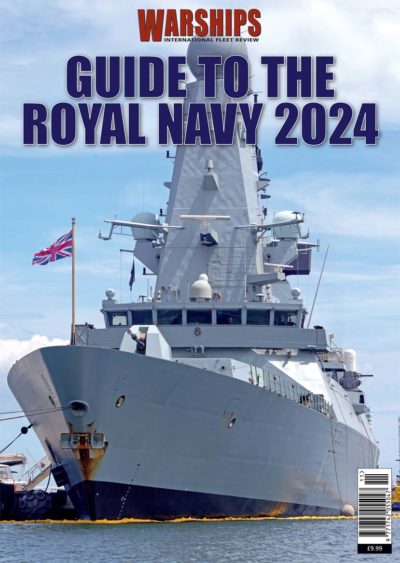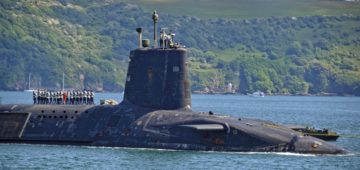
The new UK Government’s launch of a wide-ranging Defence review is welcome, with the results due in the first half of 2025. It will have consulted representatives of the military, industry, veterans, politicians, allies and partners (especially in NATO) plus academics.
There is room to be optimistic and, rather than just being an excuse for penny-pinching, it actually appears focused on ensuring Britain’s ‘hollowed-out armed forces are bolstered and respected, that defence spending is responsibly increased’, as the Govt’s own blurb on the review explains. With conflict in Ukraine and the Middle East – and rising global threats – Britain’s defences are seemingly ill-equipped right now to cope with a “more dangerous and volatile world,” as Prime Minister Sir Keir Starmer has put it. Commitment to a potential defence spending increase of 2.5 per cent of GDP was already on the cards (under the Sunak administration) and was reaffirmed by Starmer during the NATO summit in Washington.
But there is a caveat – it will only happen if public finances can support it, despite various NATO politicians and top military officers warning that war with Russia is coming within 3 – 5 years (or 20 years, depending on who is speaking). War or not, 2.5 per cent of GDP is not enough to fix the UK Armed Forces, with analysts highlighting that it only allows Britain’s defences to stand still. Some are calling for it to be increased to 4 per cent of GDP, to match Cold War levels. Given the state of the economy, plus UK Govt claims they inherited a far worse public finances situation in every respect than they anticipated – hence the likely need for continued austerity measures – the chances of a rise in defence spending at all are slim. Nonetheless, it appears efforts are being made to telegraph to Britain’s allies that things will change for the better, and it has to be admitted that often it is not the sum of money devoted to UK Defence but rather the way in which it’s spent (and wasted). Both the previous Labour and Conservative governments made decisions that hollowed out the armed forces while wasting billions of taxpayers’ hard-earned pounds.

UNDER the fresh Labour administration the new review is being overseen by Defence Secretary John Healey, though the much-respected Lord Robertson, a former UK Defence Secretary (1997/1999) and NATO Secretary General (1999 – 2003), will also participate. Joining him are Dr Fiona Hill, foreign policy expert and former US presidential advisor, and Army General Sir Richard Barrons previously Commander Joint Forces Command and before that Deputy Chief of the Defence Staff. They are supported by a ‘Defence Review Team’ of governmental and non-governmental high level experts. The composition of the team is reassuring, perhaps due most of all to the presence of Lord Robertson. He initiated the 1998 Strategic Defence Review (SDR98) that refocused Britain’s defences towards force projection/expeditionary warfare, the most notable feature of which was ordering the Queen Elizabeth Class carriers, and the creation of the best amphibious warfare flotilla in Europe.
Critics would argue SDR98 was successively whittled down over the following years due to being unaffordable. But that was more of a political choice, as P.M. Tony Blair decided to leap into interventionist wars in Iraq and Afghanistan, which Chancellor Gordon Brown wouldn’t fund properly. Therefore, the Navy and Air Force, along with aspects of the Army not connected to counter-insurgency warfare, were under-funded and salami slicing saw force levels cut and capability ‘holidays’ introduced to pay for the land wars of choice. With Kier Starmer moulding himself in Blair’s image, and unwilling to raise taxes, measures laid out in the 2024/25 defence review to restore the UK Armed Forces might also be stillborn, or similarly underfunded. Nevertheless, Starmer is keen to demonstrate his Atlanticist credentials, hence the presence of Dr Hill in the review team.
The USA needs to be reassured that Britain can be relied on to be a partner and – should the review rebuild Britain’s force projection capability – one that can pull its weight in the top tier. Washington will certainly approve of the review ensuring Britain continues to lead in NATO, modernises and maintains the nuclear deterrent and bolsters Ukraine’s ability to fight off Russia. European NATO partners are certainly getting their act together with 22 of 23 members now meeting the two per cent of GDP minimum defence spending required for Alliance membership. Minds have been sharpened by the possibility of a second Donald Trump presidency. Trump’s longstanding gripe that most NATO members are freeloaders is neither new nor unwarranted. Previous US Presidents, including Obama, made similar complaints – but in a second term Trump may up the ante, especially if encouraged by putative Vice President J. D. Vance who is against the USA providing military aid for Ukraine at the expense of facing down the Chinese threat in Indo-Pacific. Withdrawal of American support would play right into Vlad the Invader’s hands, potentially delivering the long-sought Russian victory simply by denying Ukraine the weapons to stay in the fight.
Europe ramping up its own support in anticipation is urgent, though not at the expense of their own armed forces such that it leaves them unable to defend themselves properly.
With President Joe Biden deciding late in the day not to seek re-election, instead supporting current Vice President Kamala Harris to beat Trump, there is now a chance the Republican presidential nominee may not win and so NATO can breathe easier, though it would be unwise to bank on it.
TURNING back to the conduct of the UK defence review, there are already stirrings of unease in some quarters about its potential direction. Currently Britain’s military suffers full spectrum deficiencies. Former Army chief, General Patrick Sanders was blunt in revealing a serious numbers crunch means Britain’s military wouldn’t last more than a month in even a small scale war. His assessment of less than five years to prepare for a major Russian attack on NATO territory isn’t what politicians want to hear. There’s no chance the UK Defence Secretary’s aspiration of committing two armoured divisions to NATO can be met. The manpower and material simply isn’t there. Decision makers have surrendered to ‘techno romanticism’, thinking fantasy technology can replace numbers. Perhaps it will, but not just yet. Britain’s power has always been underpinned by naval might however, and where Anglo-US co-operation has always been strongest.
And if there is one thing NATO needs it is a stronger Royal Navy (RN). A strong British Army on the Continent? Not so much. Poland, Germany and France are the leading Continental land powers and so that is their job.
If money remains tight the review will have to focus spending most of it on the Navy, though John Healey seems keen to bolster the Army rather than the Navy. He has made it clear that he backs the nuclear deterrent force being maintained and the AUKUS programme, but that’s about it when it comes to utterances on the Navy. But it is about so much more and the Navy needs repairs to years of damage to force levels, personnel retention and recruitment.

And let’s not forget the Royal Fleet Auxiliary (RFA) – a key enabler for sustained operations – is in a shocking state of inactivity. Also, the frigate force is disappearing years before new ships are ready while most destroyers are not available for operations.

The primary amphibious ships are out of service. The Royal Marines look likely to not to fulfil their much-trumpeted transformation. Conventional firepower across the fleet is lacking.
The nuclear deterrent force of ballistic missile submarines (SSBNs) is suffering unprecedented strain due to the same maintenance capacity problems and dry dock non-availability that is also seeing attack boats (SSNs) marooned alongside. The aircraft carriers have suffered propulsion problems that are now fixed, but it takes a lot of people to operate both of them at the same time while there are not enough F- 35B jets to exploit their massive strike power potential.
We’d very much welcome John Healey or Armed Forces Minister Luke Pollard also highlighting the Navy has severe problems across the board that need fixing.
The Secretary of State has more than once highlighted that the Army is too small. But, ditto the Navy and the RAF. Or are we to see a replay of what happened during the wars in Afghanistan and Iraq, where the Navy paid a heavy price to keep the Army in the fight?
BRITAIN can hardly be an Atlanticist power without a strong navy, and it is how to best make a decisive commitment to NATO and to global security with partners such as Japan and Australia. Today Britain has two Littoral Response Groups (LRGs) – and elements of one recently visited Australia – but they are not very robust.
The UK sold its sole helicopter carrier to Brazil without replacement, one of its auxiliary landing ships to Australia, and seems to have lost faith entirely in its Landing Platform Docks (LPDs). It no longer has a proper Amphibious Ready Group (ARG). This is despite other nations demonstrating continuing relevance and utility of LPDs and helicopter carriers.
New littoral warfare vessels – Multi Role Support Ships – are promised but they are many years away. While six may be promised there are fears they may either never be ordered or the number cut. Politicians like to big up programmes of renewal as if they give an instant boost to the Navy while getting rid of the current generation of ships rather than refitting them to ensure there is no capability gap.
Three new dry stores ships for the Royal Fleet Auxiliary (RFA) are promised, but they are not yet being built despite the passing of many months since they were announced.
The UK currently has no dry stores ships to support its aircraft carriers and the new ones are years away from entering service. Meanwhile, there is a RFA recruitment crisis meaning most of the UK’s once impressive fleet of naval tankers is laid up.
Politicians also like to talk about the new frigates – with one or two Type 31s and one Type 26 in service by 2028 if we are lucky – as if they are filling current gaps in the Fleet caused by Type 23 frigate decommissioning.

They also enjoy highlighting the future Dreadnought Class SSBNs and SSN-AUKUS but the former will not enter service until the 2030s and the latter not until the 2040s. In the meantime most of the five Astute Class SSNs in service are not available for deployment, with only two Vanguard Class SSBNs carrying the deterrent. Naval recruitment is also turgid, so the baby sailors needed to operate the future fleet are not being created fast enough. Overall it is an appalling state of affairs. The RN of today is half the size it was during the Cold War and while warships are more capable, there are too few and drones can only do so much as force multipliers and are, as yet, immature naval tools.
But Britain has to bring something operationally effective and worthwhile to the table right now – not just in the 2030s or 2040s.
That means less fantasy fleets of tomorrow and more fixing the current state of affairs to get the Navy out there doing its business to deter and, if needs be, fight foes like the Russians.
There is no time to waste, so the current defence review better do something for the here and now and not just over promise things that will take an age to deliver – or never happen at all.








Comments
Sorry, comments are closed for this item